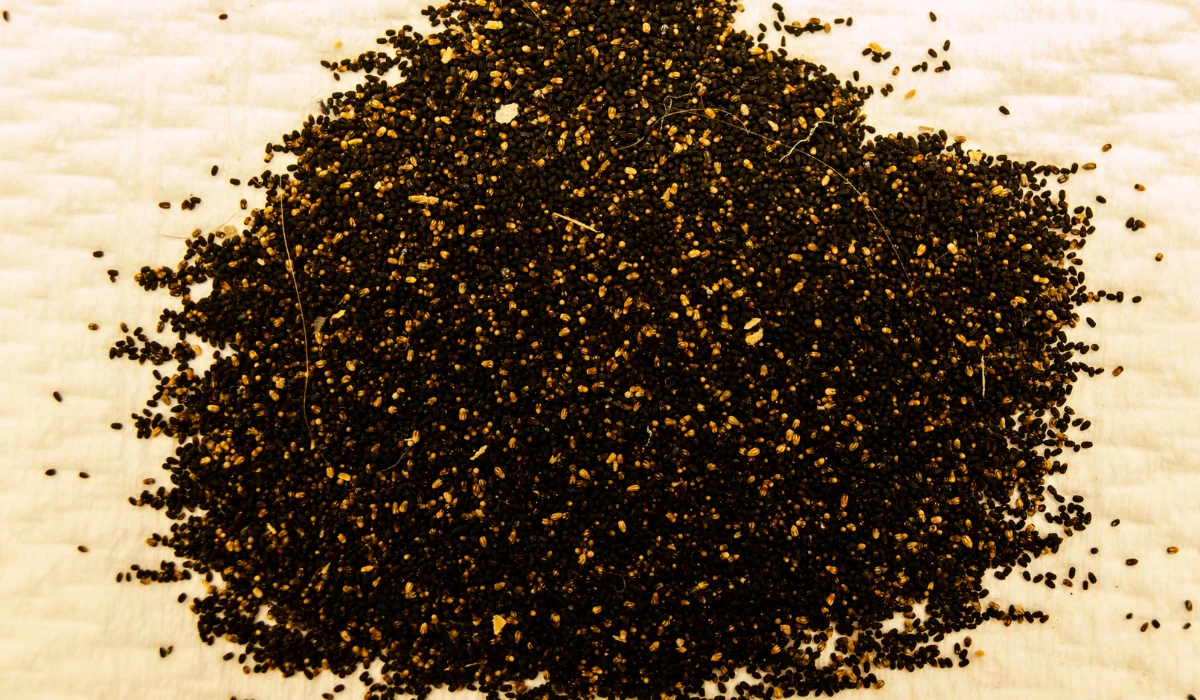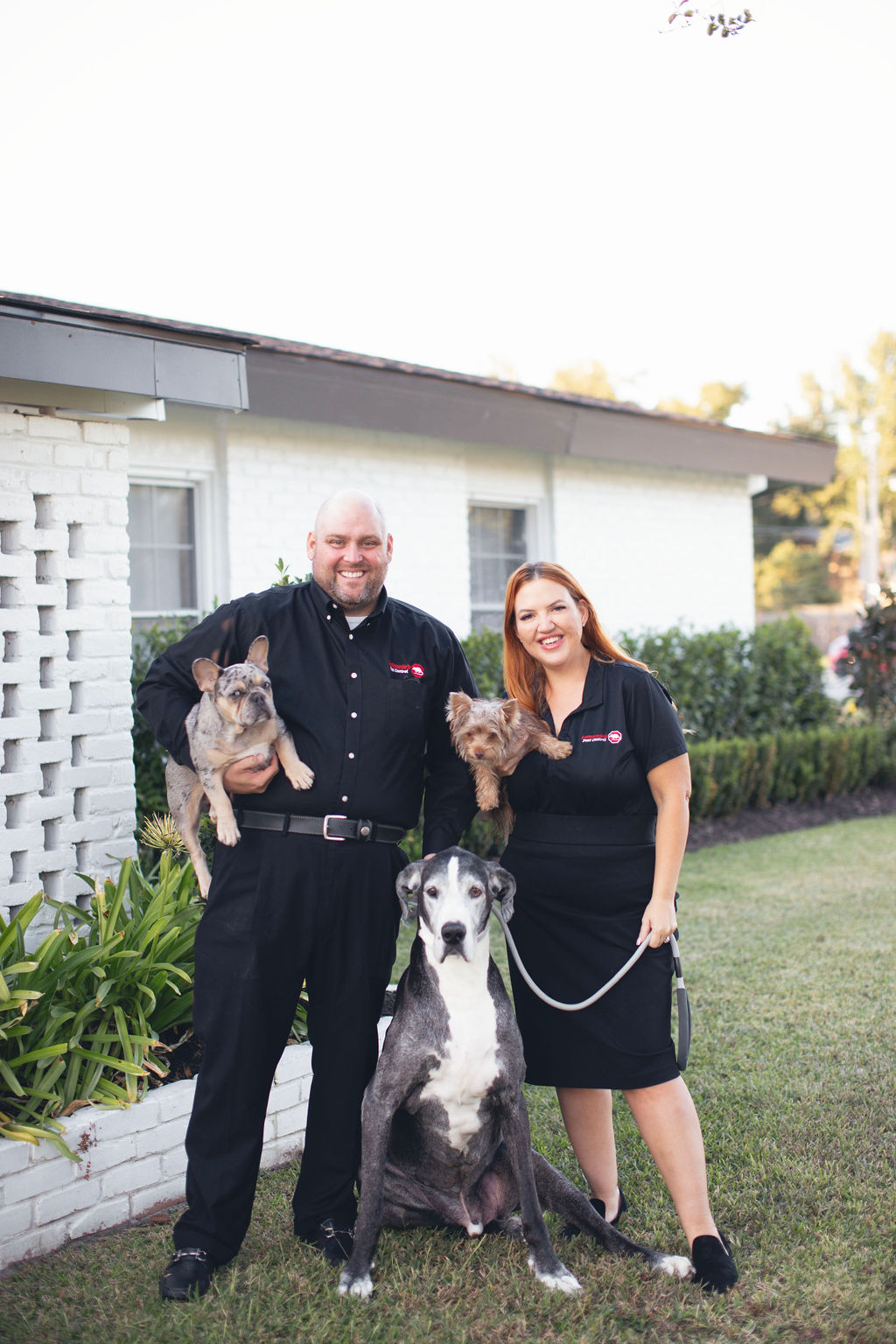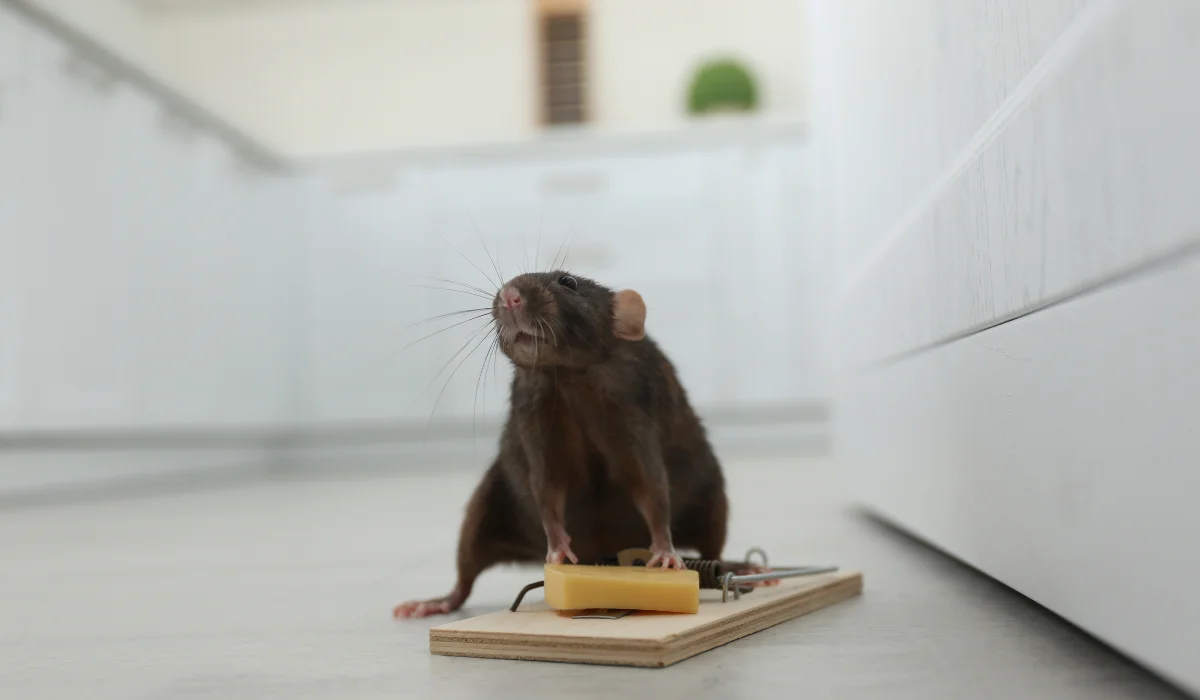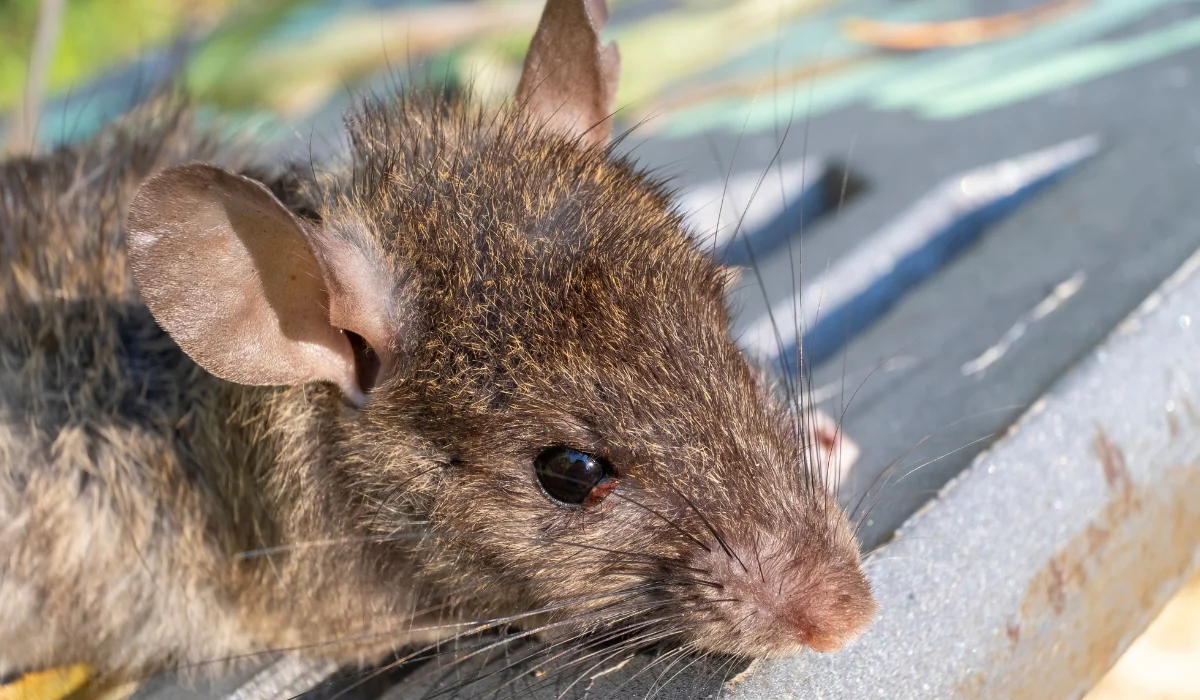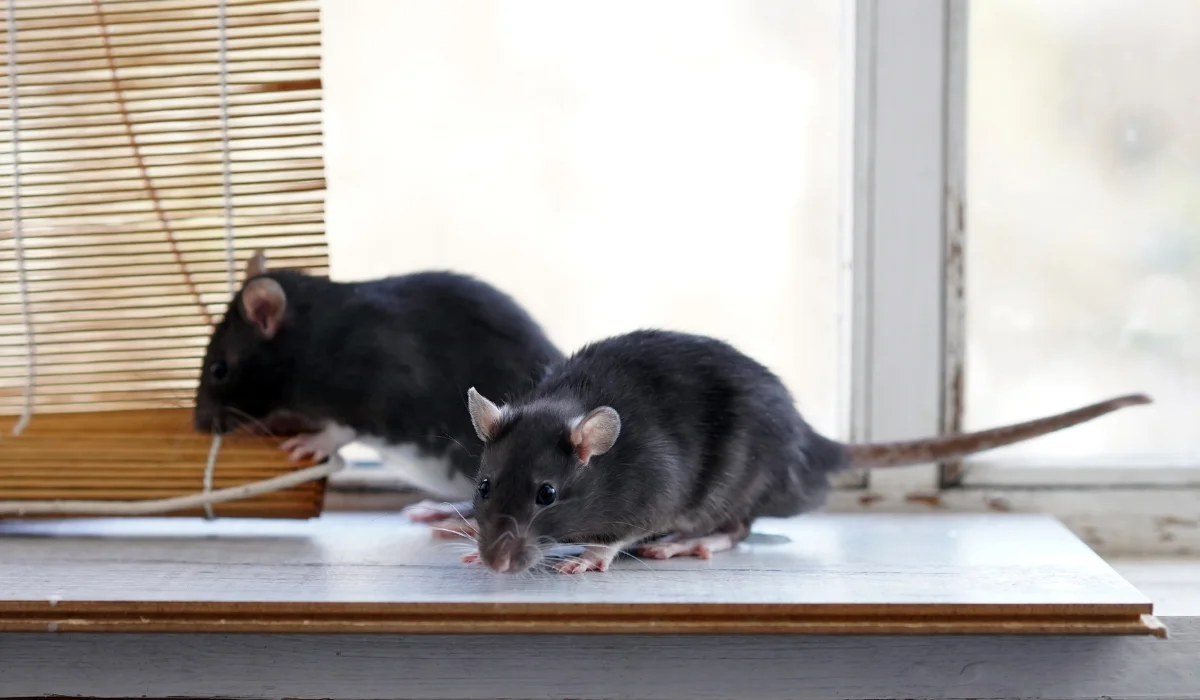Finding termite droppings inside your home can be the first warning sign that you’ve got a bigger problem lurking in your walls. These tiny pellets—technically known as frass—are one of the clearest indicators of a drywood termite infestation.
But not every pile of debris is a cause for concern. Some might be sawdust from renovations or even ant droppings.
In this article, you’ll learn how to identify them, what they look like, where to find them, and what to do if you suspect an active termite colony in your home.
Key Takeaways
• Termite droppings look like light brown coffee grounds and usually pile up near wooden furniture or baseboards.
• Drywood termite pellets are tiny, oval, with rounded ends, and are often mistaken for sawdust or ant droppings.
• Small piles near window sills or crawl spaces are a clear sign of an active termite infestation inside the wood.
• A licensed pest control company can provide a thorough inspection of the droppings and handle the problem with proper treatment.
Color: Light Brown Like Coffee Grounds
Termite droppings are often confused with coffee grounds or pepper, especially when they appear on window sills, in basements, or crawlspaces.
But one giveaway is the color.
Drywood termite droppings are typically light brown to dark brown. They can vary depending on the type of wood. Because termites digest cellulose, their droppings often take on a fibrous, wood-toned look.
If you notice fine, gritty material accumulating around baseboards or trim, especially near wooden furniture, don’t assume it’s just debris.
This could be a warning sign of a termite infestation.
Shape: Oval-Shaped With Rounded Ends
A defining feature of drywood termite frass is its shape.
These droppings are oval-shaped with rounded ends and six subtle ridges along the sides. This shape makes them easy to distinguish from wood shavings or cockroach droppings.
Carpenter ants, another wood-infesting insect, leave behind sawdust-like debris but not the pelletized excrement that termites do.
If you’re looking through a magnifying glass and you spot uniform, capsule-like droppings, you’re likely dealing with drywood termites.
Size: Tiny Termite Pellets in Small Piles
Drywood termite droppings are about 1 millimeter in length—smaller than a grain of rice. You’ll usually find them in small piles near wooden structures.
These aren’t random. Termites create kick-out holes to push their waste out of the tunnels they build in your home’s wood.
If you find termite pellets consistently showing up in the same area, like under furniture or along the edge of a wooden beam, that’s a strong sign of an active infestation.
Location: Found Near Kick-Out Holes and Crawlspaces
Most homeowners notice termite frass in common areas like around window sills, attics, or crawlspaces, especially in homes with untreated wood.
Look near joints where wood meets drywall or tile. If you’re seeing frass close to the base of a wall, the termites are likely working inside that wall.
Subterranean termites don’t produce visible droppings like drywood termites do. Instead, they use their excrement to help build mud tubes and mud tunnels.
So, finding pellets instead of mud structures can help you identify the species involved.
Texture: Hard, Gritty, and Not Like Sawdust
Many mistake termite poop for sawdust or even dirt. But while sawdust feels soft and flaky, it is dry, hard, and feels gritty when you rub it between your fingers. It doesn’t crumble like wood shavings and holds its shape even if you handle it.
If you’re unsure, grab a magnifying glass and look at the texture up close. True drywood termite excrement will be compact and faceted, not flaky or powdery.
What to Do if You Find Termite Droppings
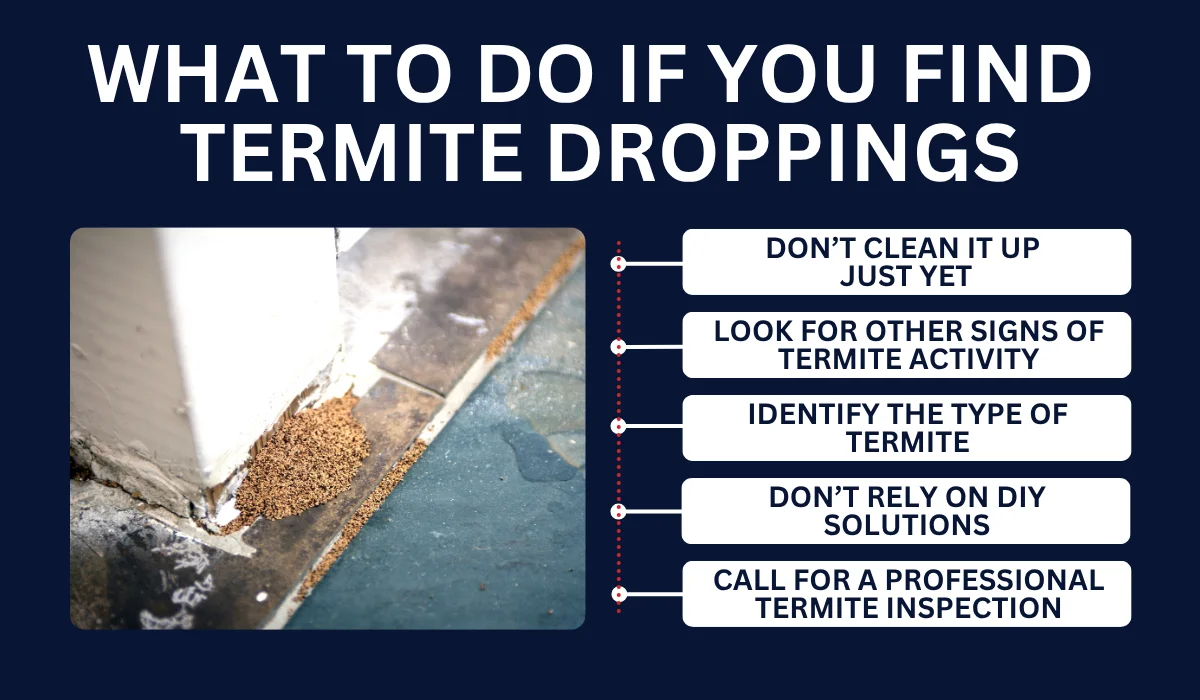
Seeing termite droppings means you’re not dealing with a past problem. It’s likely an active termite infestation. Here’s how to move forward:
Don’t Clean It up Just Yet
It’s tempting to sweep up the mess, but hold off.
Those droppings help a pest control company determine the type of termite and where the infestation is located. They may use that information to guide treatment strategies.
Look for Other Signs of Termite Activity
Inspect the area for more signs of termite infestation: look for kick-out holes, wood that sounds hollow when tapped, bubbling paint, or visible termite damage.
Also, check for mud tubes if you suspect subterranean termites instead. Swarmers—winged termites that leave the nest to start new colonies—are another major red flag.
Identify the Type of Termite
Knowing whether you’re dealing with drywood termites, subterranean termites, or dampwood termites is crucial.
Each termite species behaves differently, and treatment options vary.
Drywood termites leave behind pellets, while subterranean termites build mud structures. Dampwood termites, less common in homes but still found in parts of Louisiana, tend to infest moist wood and may not leave pellets at all.
Don’t Rely on DIY Solutions
DIY termite control might seem cheaper, but it’s rarely effective long-term. The droppings you see are just the surface.
The problem is hiding inside your walls, floors, or attic.
Without proper equipment and expertise, it’s nearly impossible to reach the full colony. Professional pest control offers more reliable termite treatment and prevention.
Call for a Professional Termite Inspection
After you document the frass, call for an inspection from a licensed pest control company. At LaJaunie’s Pest Control, we specialize in identifying the signs of termite activity and treating all types of infestations across Southern Louisiana.
Whether you’re seeing termite excrement on your baseboards or small piles near your window sills, we’re here to inspect your home and recommend the right termite control plan. Call us today for a full inspection and a treatment plan that works for your home.
 By: LaJaunie's Pest Control
By: LaJaunie's Pest Control 